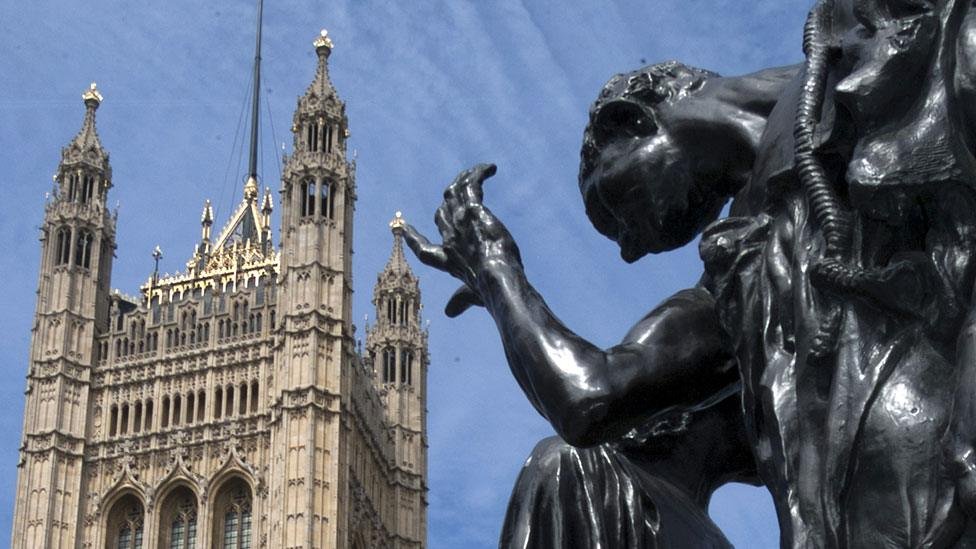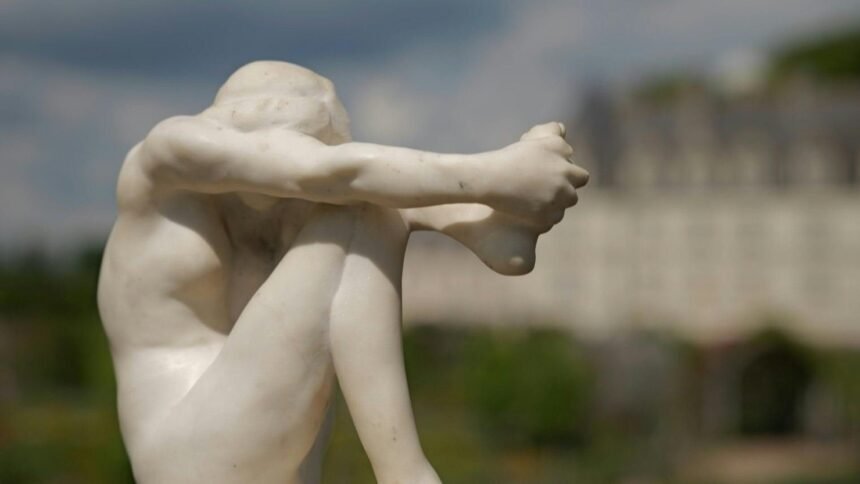A Hidden Gem: Rodin’s Despair on the Family Piano
For decades, a delicate marble sculpture rested unassumingly on a family piano in France. The family regarded it merely as a replica of a famous piece by the legendary French sculptor Auguste Rodin. Indeed, the artwork turned out to be the original Rodin sculpture Despair. This 28.5cm figure had vanished from public records over a century ago. This extraordinary rediscovery sent ripples through the art community. It ultimately culminated in the sculpture’s sale at auction for nearly $1 million.
Unveiling a Hidden Rodin Sculpture
What seemed to be a mere decorative object was, in fact, an authentic creation by Auguste Rodin from 1892. Titled Despair, the sculpture shows a pained woman. Her knees are drawn to her chest and she holds one foot in her hand. This visually represents profound emotional turmoil.

The sculpture mysteriously disappeared after its 1906 auction sale. Its recent authentication and sale have reignited interest in Rodin’s lesser-known works. Furthermore, they also highlight his meticulous artistry, even in smaller sculptures.
The Rodin Sculpture Despair: An Authenticity Breakthrough
The family that owned the sculpture had believed it to be a mere imitation of Rodin’s style. Curious about its true origin, they brought the sculpture to French auctioneer Aymeric Rouillac. Recognizing its artistic merit, Rouillac and his expert team launched a detailed investigation into its provenance. Their journey led them to the Comité Rodin, a prestigious research group that authenticates and studies Rodin’s work.
Consequently, after a six-week examination, the committee confirmed the sculpture was the original Despair, lost since 1906. The revelation instantly elevated the piece’s cultural and financial value.
Rodin’s Despair at Auction: Historic Value Meets Market Demand
Once authenticated, the Rodin sculpture Despair was listed for auction in France. Auctioneer Aymeric Rouillac described the piece as an “extremely rare find”—a sentiment echoed by art historians and collectors worldwide. The auction concluded when a buyer purchased the sculpture for an impressive €860,000 (approximately $982,000 or £725,000). However, Despair isn’t one of Rodin’s most iconic works. Still, it commands respect for its emotional intensity and craftsmanship. Indeed, these qualities clearly captivated bidders.
The Artistic Context of Rodin’s Despair: From The Gates of Hell
Rodin originally created Despair as part of his magnum opus, The Gates of Hell. This monumental sculptural project drew inspiration from Dante Alighieri’s Inferno. He intended the artwork as a grand portal for a proposed Museum of Decorative Arts in Paris. Despite this, he never installed the doors during his lifetime.
Rodin modeled Despair as one of several figures for The Gates of Hell’s complex landscape of torment and redemption. However, though not part of the final cast, Rodin admired the figure enough to reproduce it in various standalone forms.
Rodin’s Despair: A Masterclass in Human Emotion
Standing just 28.5cm (about 11 inches) tall, the marble sculpture encapsulates Rodin’s genius for emotional realism and anatomical precision. The figure’s posture—knees drawn in tightly and one foot clutched in the figure’s hand—communicates a vivid emotional landscape of grief, regret, and inner turmoil.
Rodin’s signature fluidity of form and tactile detail are present in every curve of the figure, proving once again that emotional intensity need not be achieved through grand scale alone.
The Comité Rodin: Guardians of Rodin’s Despair and His Legacy
The Comité Rodin, based in Paris, plays a pivotal role in the authentication of Rodin’s work. Its scholars, curators, and art historians maintain an authoritative catalogue raisonné and use scientific and stylistic analysis to verify claims of authenticity. Consequently, their confirmation that Despair was indeed sculpted by Rodin not only validated the owners’ claims but also significantly increased the piece’s value.
Without this institutional support, many potential masterpieces might remain misidentified, undervalued, or forgotten.
Tracing the Provenance of Rodin’s Despair: From 1906 Auction to Modern Rediscovery
How the sculpture ended up sitting on a family piano for decades remains part of the mystery. Historical documentation confirms that Despair was sold at a 1906 auction. However, it then vanished from scholarly records. Perhaps it was passed down through generations, its origins forgotten. Ultimately, modern curiosity sparked a revelation.
Art historians often note that many artworks vanish into private collections, sometimes never resurfacing. This changes only when an inquisitive mind takes the initiative to investigate.
The Importance of Provenance: Valuing Rodin’s Despair
In the art world, provenance—the documented history of an artwork’s ownership—is as vital as the work itself. Authenticity hinges on this chain of evidence. For Despair, its reappearance and the rediscovery of provenance added immeasurably to its value.
Indeed, Rodin’s signature on the sculpture, coupled with stylistic analysis and matching documentation, completed the chain of credibility that allowed for its high-profile auction.
Rodin’s Enduring Appeal in the Modern Art Market: Insights from Despair’s Sale
Rodin remains one of the most revered sculptors in art history. Best known for The Thinker and The Kiss, his portfolio includes countless studies of the human form rendered with empathy and dynamism. Indeed, modern collectors and museums alike value Rodin’s works not only for their aesthetic appeal but also for their philosophical depth.
The sale of Despair reaffirms that Rodin’s emotional and sculptural language continues to resonate in today’s art market.
Marble as Medium: Challenges and Brilliance in Rodin’s Despair
Though Rodin often worked in bronze, marble presented a different set of challenges and possibilities. Indeed, carving marble requires not just artistic vision, but also immense precision and technical skill. Any error can ruin the entire piece.
That Despair survived over a century without significant damage adds to its allure and reinforces the expertise with which Rodin approached even smaller works.
Emotional Themes in Rodin’s Work: The Legacy of Rodin’s Despair Sculpture
Rodin’s artistic exploration of human emotions goes beyond surface expressions. In Despair, sorrow becomes tactile—made flesh in stone. His work stands as a bridge between realism and impressionism, emotional truth and physical form.
The rediscovery of Despair revives these themes and offers new audiences a glimpse into the emotional core of Rodin’s creative world.
Modern Implications: The Rediscovery of Rodin’s Despair in the 21st Century
In an age dominated by digital art and contemporary installations, the rediscovery of a classical sculpture by Rodin underscores the timeless nature of traditional artistry. Indeed, the incredible journey of the Rodin sculpture Despair—from a dusty piano to a prestigious auction—is more than just a tale of art rediscovery.
The story of Despair may inspire collectors to revisit old collections and question assumptions about what constitutes a copy and what might be an original.
The Rodin Sculpture Despair: From Forgotten Figure to Cultural Treasure
Ultimately, the incredible journey of the Rodin sculpture Despair—from a dusty piano to a prestigious auction—is more than just a tale of art rediscovery . It’s a testament to the enduring power of great art, the importance of expertise in authentication, and the potential that lies in every unassuming object.
As this once-lost masterpiece finds its place in the spotlight once again, it serves as a poignant reminder of the depth, skill, and emotion embedded in Rodin’s legacy.




